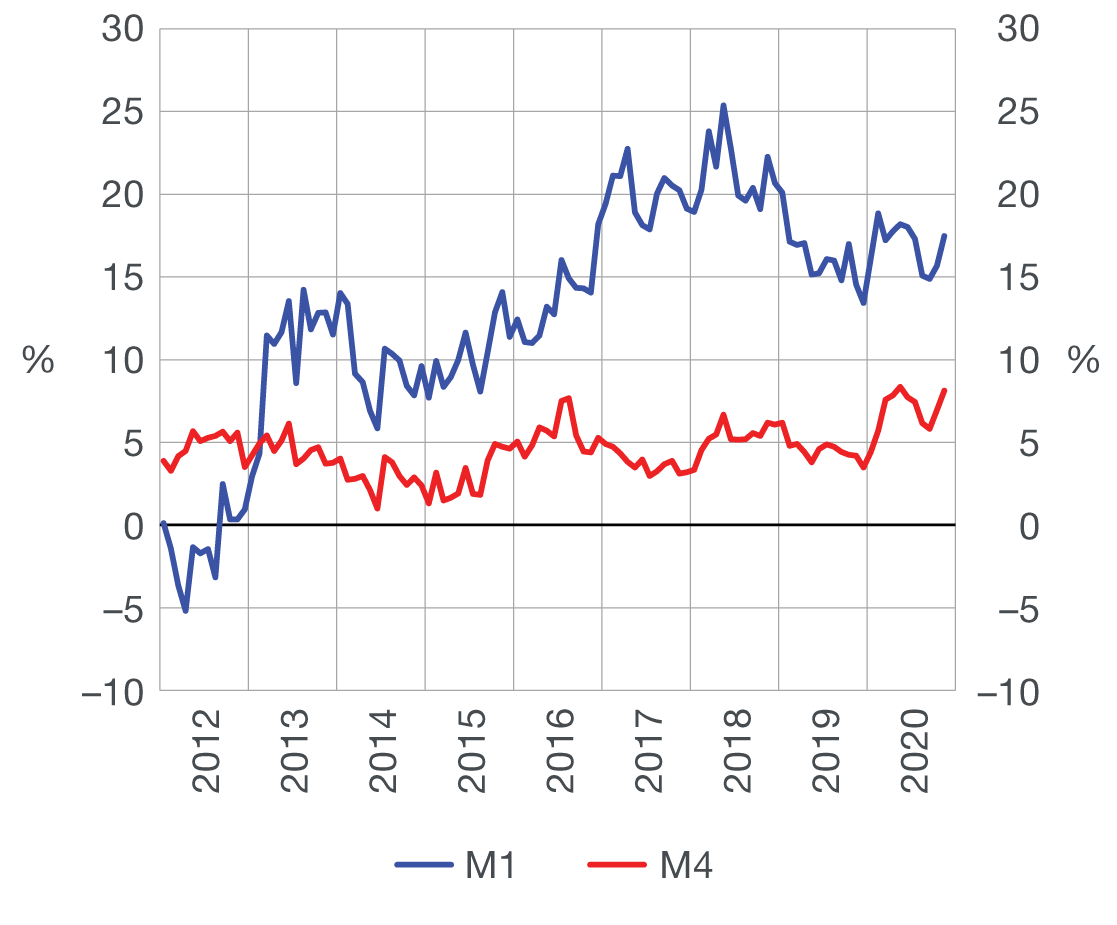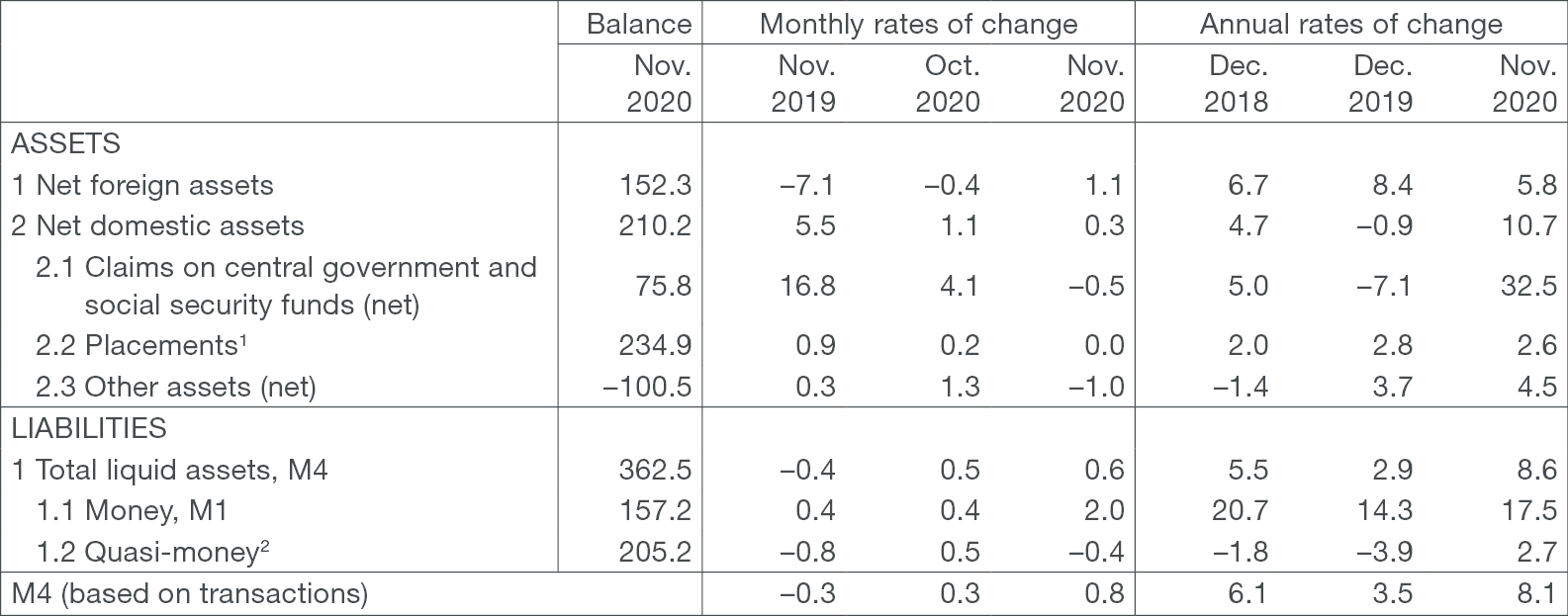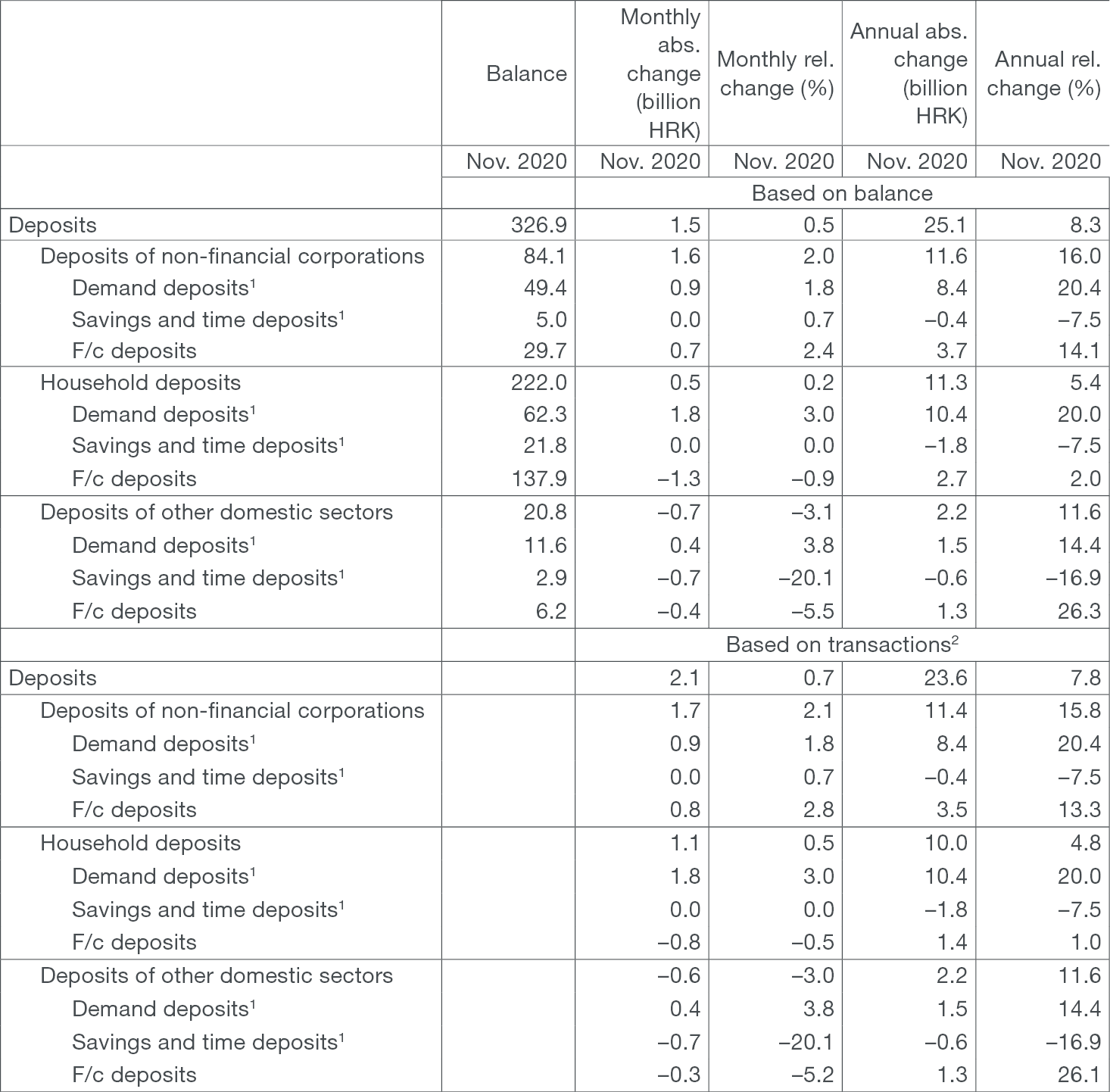From August 2023 the comments on statistics, a short description of selected, recently issued statistical data in the area of monetary statistics and the non-residents sector statistics, are no longer published. They are replaced by Statistical releases.
Comments on monetary developments for November 2020
Total liquid assets (M4) increased in November primarily due to the growth in net foreign assets (NFA) caused by the inflow of EU funds under the SURE instrument. As a result, the growth of M4 was more intensive than at the same time of the previous year and continued to accelerate.
Total placements of monetary institutions to domestic sectors (excluding the central government) rose in November primarily as a result of the increase in household placements under the impact of the second round of the housing loans subsidy programme, with the main impact expected to be seen in the upcoming months. If observed on an annual level, the growth of total placements slowed down due to the slowdown in the growth of household and corporate loans.
At the end of November 2020, total liquid assets (M4)[1] increased by 0.8% (based on transactions) from the previous month, ending November at HRK 362.5bn (Table 1). This monthly increase in M4 was aided by the growth in net foreign assets (NFA) of the CNB and to a lesser extent by the growth in net domestic assets (NDA). The CNB's NFA substantially increased due to the payment of the first tranche of the EU support under the SURE instrument, totaling EUR 517m, to the government's foreign exchange account with the CNB. As regards the components of M4, money (M1)[2] rose by HRK 3.0bn (2.0%) from October, primarily due to the increase in demand deposits of households, but of corporates as well. On the other side, quasi-money decreased in November, with both foreign currency and kuna deposits decreasing. Households (HRK 0.8bn) and other financial institutions (HRK 0.3bn) contributed to the fall in foreign currency deposits (HRK 0.3bn, based on transactions), while corporate foreign currency deposits grew by HRK 0.8bn (Table 3). If observed on an annual level, the growth in M4 accelerated from 7.0% in October to 8.1% in November based on transactions (Figure 1). The growth in M1 accelerated from 15.7% in October to 17.5% in November, and quasi-money from 1.2% to 1.9% (transaction-based)
| Figure 1 Monetary aggregates annual rates of change based on transactions |
Figure 2 Placements annual rates of change based on transactions |
 |
 |
| Source: CNB. |
Total placements of monetary institutions to domestic sectors (excluding the central government) increased by HRK 0.6bn or 0.3% in November on the previous month, while their annual growth slowed down from 3.3% to 2.5% based on transactions (Figure 2). In total placements, which stood at HRK 234.9bn in November, loans accounted for the greatest share (HRK 229.1bn). Loans to households continued to grow in November (by HRK 0.4bn from October, based on transactions), with housing loans rising by HRK 0.7bn under the impact of the new round of subsidies, while general-purpose cash loans decreased by HRK 0.2bn (Table 2). Due to the fall in general-purpose cash loans and the fact that the housing loans subsidy programme in November last year greatly impacted credit activity (this year the majority of the influence is expected in the upcoming months) the annual growth in household loans slowed down (from 3.1% in October to 2.4% in November ). Corporate loans remained almost unchanged in November. However, their growth slowed down from 4.7% to 3.2% on an annual level (based on transactions) due to the effect of the base period, i.e. due to the sizeable growth in corporate borrowing in November of last year.
Table 1 Summary consolidated balance sheet of monetary institutions
in billion HRK and %

1The sum total of asset items 2.2 to 2.8 of Bulletin Table B1: Consolidated balance sheet of monetary financial institutions
2 The sum total of liability items 2 to 5 of Bulletin Table B1: Consolidated balance sheet of monetary financial institutions.
Source: CNB.
Table 2 Loans (except the central government) and main components
in billion HRK and %

1 In addition to loans to households and corporates, they also include loans to the local government and other financial institutions.
2 The transactions show changes that exclude the effects of exchange rate changes, securities price adjustments, reclassification and write-off of placements, including the sale of placements in the amount of their value adjustment.
Source: CNB.
Table 3 Deposits (except the central government) and main components
in billion HRK and %

1 Includes only kuna sources of funds of credit institutions.
2 The transactions show changes that exclude the effects of exchange rate changes, securities price adjustments, reclassification and write-off of placements, including the sale of placements in the amount of their value adjustment.
Source: CNB.
For detailed information on monetary statistics as at November 2020, see:
Central bank (CNB)
Other monetary financial institutions
